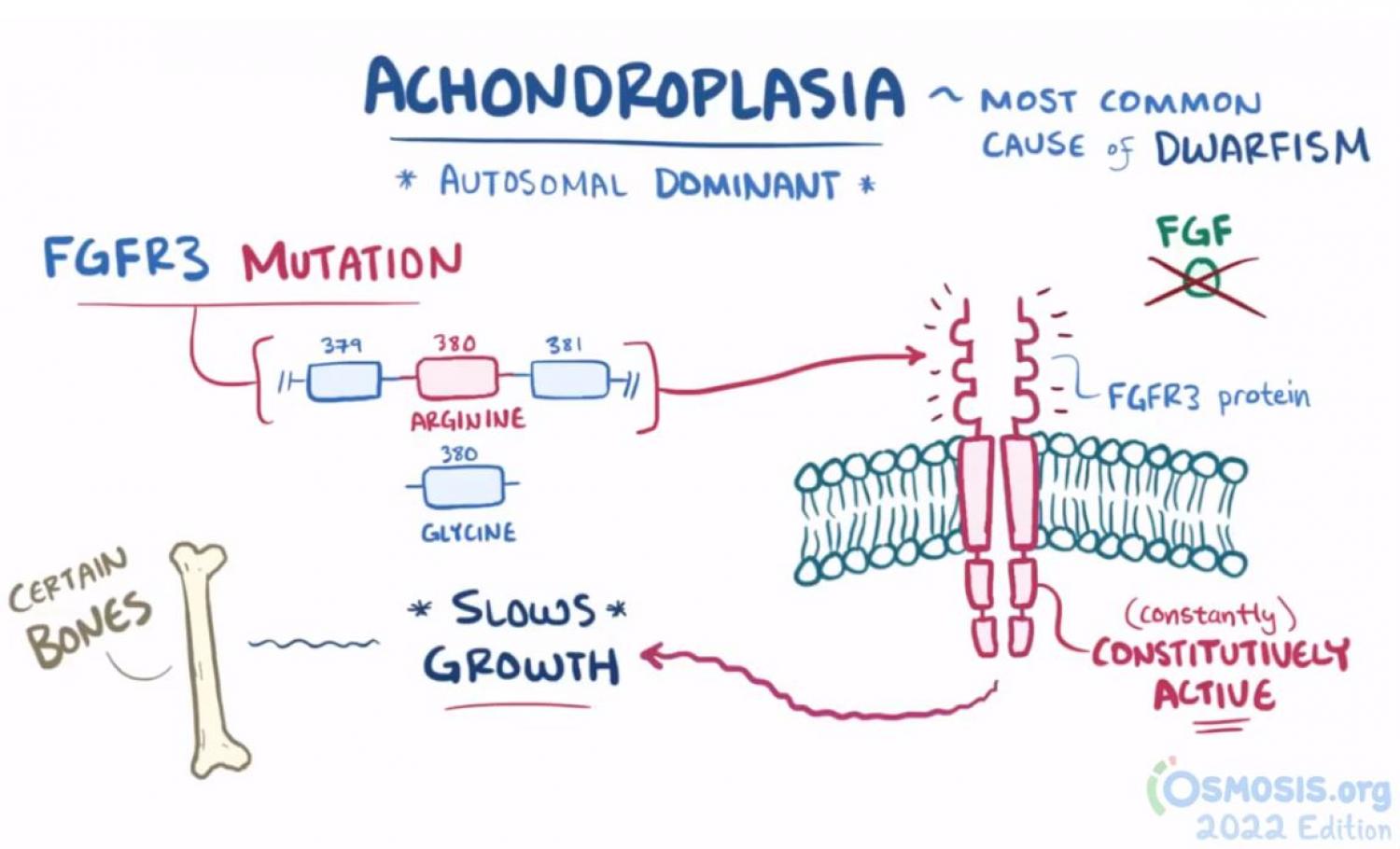
Rare Disease Education: Achondroplasia
Editor: Kelsey LaFayette, DNP, RN, FNP-C
"When you hear hoofbeats, think of horses, not zebras,” is a common saying in medical education that means you should think of common conditions first, instead of rare ones, in making a diagnosis. “Rare” is a relative term, though and about 7,000 rare, or "zebra," conditions affect more than 350 million individuals worldwide. Although these conditions collectively affect an enormous number of people, each of these conditions individually is rare enough that it can be difficult to secure the resources to study them and to develop treatments and cures for them. Likewise, awareness of rare conditions may be low and health care professionals may not be familiar with their signs and symptoms making it more difficult to reach correct diagnoses and provide effective treatments.
To increase knowledge about rare conditions, Osmosis and the National Organization for Rare Diseases (NORD) have collaborated on an initiative to bring education and awareness to the public. We are excited to be a part of this initiative because we believe everyone deserves quality health care, no matter how rare their condition.
An example of rare conditions in pop culture can be seen in HBO’s adaptation of Game of Thrones, when the character Tyrion Lannister is treated poorly by his father and siblings because he was born with a rare form of dwarfism.
In a classic scene in the show, Tyrion says, “‘I’m guilty of being a dwarf!’ To which his father replies, ‘You’re not on trial for being a dwarf!’ And Tyrion says, ‘Oh! Yes I am, I’ve been on trial for that my entire life.’”
Both Tyrion and his real-life counterpart, Peter Dinklage,have achondroplasia, an autosomal dominant form of dwarfism that results in decreased linear bone growth.
Achondroplasia is the most commonly occurring form of skeletal dysplasia, or abnormal bone, joint, and cartilage growth,, occurring in approximately 1 in 20,000-30,000 live births. This genetic disorder is caused by a mutation in the fibroblast growth factor receptor 3 (FGFR3) gene, that occurs spontaneously in 80 percent of affected individuals with the remaining 20 percent of affected individuals inheriting it from a parent.
Achondroplasia is characterized by an unusually large head, or macrocephaly; short extremities, or rhizomelia ; short stature, with an adult height of approximately 4 feet; and genu varum, or bowed legs. Achondroplasia does not typically cause impairment or deficiencies in mental abilities and if the bones joining the head and neck do not compress the brainstem or upper spinal cord, also known as craniocervical junction compression, life expectancy is approximately 61 years.
Click here to watch an educational video on Achondroplasia
More Information on Achondroplasia:
